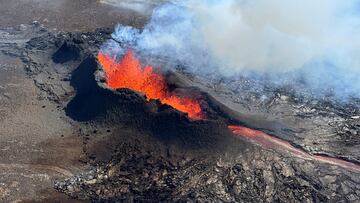NATURE
How many volcanoes are there in Iceland? How many of them are active?
Despite its name, the island is anything but cold as numerous active volcanoes keep the population on their toes.

Iceland, the north-Atlantic island off the coasts of Greenland and the United Kingdom, has declared a state of emergency due to the fear of volcanic eruption.
A series of earthquakes have been disrupting the country, home to some 376,000 people, all week. The village of Grindavik has been evacuated as a precaution for an expected volcanic eruption.
“We’re talking about an imminent eruption unfortunately. The most likely eruption side appears to be within the boundary of the town of Grindavík,” Thor Thordason, professor of volcanology at the University of Iceland, told the BBC.
Iceland has approximately 130 volcanoes with 33 active. Since 2021 there has been three eruptions on the land around Grindavik, named the Reykjanes peninsula; one each year.
Iceland is no stranger to serious volcanic eruptions. The 2010 eruption of the Eyjafjallajökull volcano led to widespread disruption in air travel across Europe. The ash plume reached high altitudes, and prevailing winds carried it southeast across Europe.
Numerous airports were forced to close and thousands of flights were canceled in the largest closure of European airspace since the Second World War. The closure of airspace lasted for several days.
Dr Evgenia Ilyinskaya, Icelandic geophysicist and co-director of the International Volcanic Health Hazard Network, told the BBC the volcanic activity on the pensinsula, “looked concerning back on Friday and Saturday that we could have something of [2010] scale... That is not the situation that is likely at the moment.”
Why is Iceland so volcanic?
The island is located on the Mid-Atlantic Ridge, which is a tectonic plate boundary between the North American and Eurasian plates. This geological setting makes Iceland highly geologically active, leading to the presence of numerous volcanoes. The country experiences a combination of divergent tectonic forces, where the plates are moving apart, and hotspot activity, where magma rises from the mantle.
This unique geologic position results in a high degree of volcanic activity. Volcanic eruptions are a natural consequence of the movement and interaction of tectonic plates.






